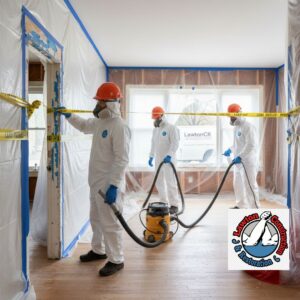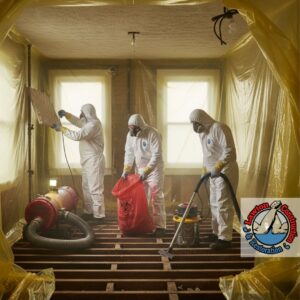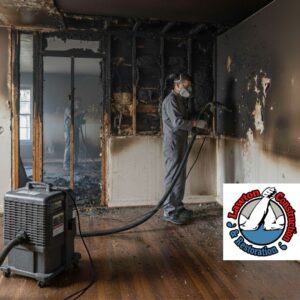The Safe Mold Remediation Process: Step-by-Step Guide to a Healthier Home

Table of Contents
Introduction
Have you ever noticed a musty smell in your home or spotted suspicious dark spots creeping along your walls or ceilings? If so, you might be facing a common yet often underestimated issue: mold. Beyond being an unsightly nuisance, mold can quietly compromise your indoor air quality and pose serious health risks to you and your family.
Understanding the mold remediation process is essential—not just to get rid of mold, but to do it safely and effectively. Whether you’re dealing with a recent water leak or living in a humid environment, knowing how to safely remediate mold can make a lasting difference in your home’s health. This mold removal guide will walk you through each step, from identifying the early signs to post-remediation prevention, all while emphasizing safe mold practices every homeowner should follow.
In this blog, we’ll break down everything you need to know about safe mold remediation so you can take control of your environment and breathe easier. Ready to discover how to create a healthier, mold-free home? Let’s dive in.
I. Understanding Mold and Its Health Risks
When was the last time you thought about what might be lurking behind your walls or under your floors? Mold isn’t just an eyesore—it’s a silent intruder that can impact your home’s structure and your family’s well-being. If you’ve been experiencing unexplained allergies, headaches, or breathing issues, mold could be the culprit.
What Is Mold and Why It Grows in Homes
Mold is a type of fungus that thrives in moist, humid conditions. It can grow on nearly any surface—wood, drywall, carpet, and even insulation—making it a common issue in homes with poor ventilation or past water damage.
Common causes of mold growth include:
- Leaky pipes or roofs
- Flooding or storm damage
- Poor bathroom or kitchen ventilation
- High indoor humidity levels
Common Types of Household Mold
Not all mold is created equal. While some varieties are relatively harmless, others—like black mold (Stachybotrys chartarum)—are known for their potential toxicity. Knowing which type you’re dealing with helps determine the safest mold remediation process to follow.
How Mold Affects Indoor Air Quality
You can’t always see mold, but you can feel its effects. Mold spores are airborne and can:
- Aggravate asthma and allergies
- Cause persistent coughing or sneezing
- Lead to fatigue or skin irritation
- Compromise immune response over time
This is where home health comes into play. Clean, breathable air is essential to overall wellness, and untreated mold quietly undermines that.
Health Symptoms Linked to Mold Exposure
Have you or a family member experienced symptoms that just won’t go away? Mold exposure can mimic seasonal allergies or the common cold, making it easy to overlook. Some signs to watch for include:
- Frequent sinus infections
- Shortness of breath or wheezing
- Chronic fatigue or brain fog
- Irritated eyes, nose, or throat
Why Safe Mold Removal Matters
A proactive, informed approach to safe mold removal isn’t just about keeping your home clean—it’s about safeguarding your health. By understanding the risks and recognizing the warning signs early, you’re already taking the first step toward achieving a healthier home through mold removal.
Now that you know the risks, let’s explore how to tell when mold remediation is actually needed.
II. Signs You Need Mold Remediation
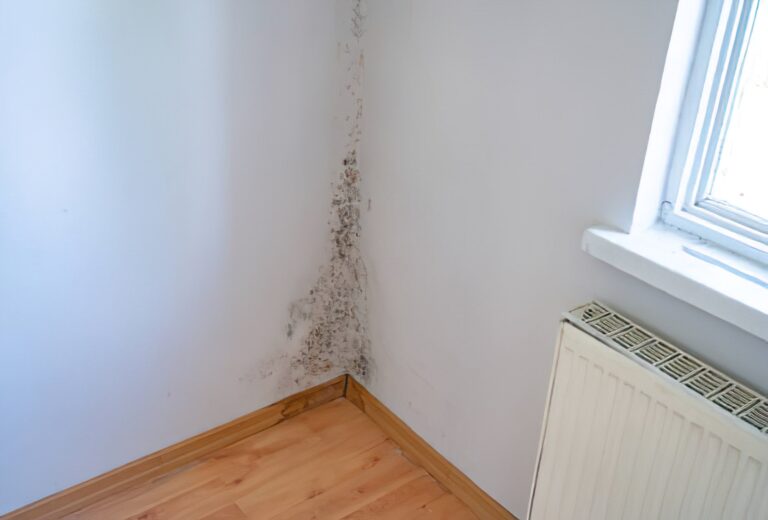
Have you ever walked into a room and thought, “What is that smell?” Or noticed strange spots appearing on your walls or ceiling that seem to spread over time? These could be more than just cosmetic issues—they may be early indicators that your home needs mold remediation.
Knowing what to look for can help you take action before the problem escalates. Let’s explore the warning signs that suggest it’s time to consider home mold removal.
1. Visible Mold Growth
This one seems obvious, but it’s often ignored. Mold can appear in many forms—black, green, white, or even orange patches—on walls, ceilings, tile grout, or basement corners. If you see fuzzy or discolored spots that return after cleaning, that’s a red flag.
2. Persistent Musty Odors
Even when mold isn’t visible, your nose might know. A damp, earthy, or musty smell is a strong indicator of hidden mold, especially in areas like:
- Bathrooms and laundry rooms
- Under sinks or behind appliances
- Crawl Spaces or attics
These smells linger because mold releases volatile organic compounds (VOCs), making this one of the clearest signals it’s time for safe mold remediation.
3. Recent or Ongoing Water Damage
Has your home experienced flooding, roof leaks, or plumbing issues? Mold often begins to grow within 24–48 hours of water exposure. Even if everything looks dry now, moisture trapped behind walls or under floors can create the perfect breeding ground.
Ask yourself:
- Was the affected area professionally dried and treated?
- Has there been a follow-up inspection for moisture?
If not, a mold remediation process for home safety may be necessary.
4. Health Issues That Don’t Go Away
Sometimes, your body sends the clearest message. If you or your family members have been dealing with unexplained health issues, mold could be to blame. Look for symptoms such as:
- Ongoing congestion or sinus infections
- Asthma flare-ups or difficulty breathing
- Itchy eyes, rashes, or throat irritation
These may seem minor at first, but when combined with other signs, they could indicate deeper air quality issues tied to mold.
5. Peeling Paint or Warped Walls
Structural signs like bubbling paint, warped drywall, or sagging ceilings are more than just aesthetic problems—they can point to hidden mold colonies caused by excessive moisture.
When these signs start adding up, don’t wait for the situation to get worse. Taking swift, informed action can help stop the spread and restore your home’s safety. Up next, we’ll walk through how to prepare for safe mold removal the right way.
III. Preparing for Mold Remediation
So, you’ve identified the signs—now what? Before diving headfirst into removal, it’s essential to understand that safe mold removal starts with proper preparation. Skipping this phase can lead to bigger problems down the road, including cross-contamination, structural damage, and ongoing health issues. Think of this step as laying the groundwork for a successful and stress-free mold remediation process.
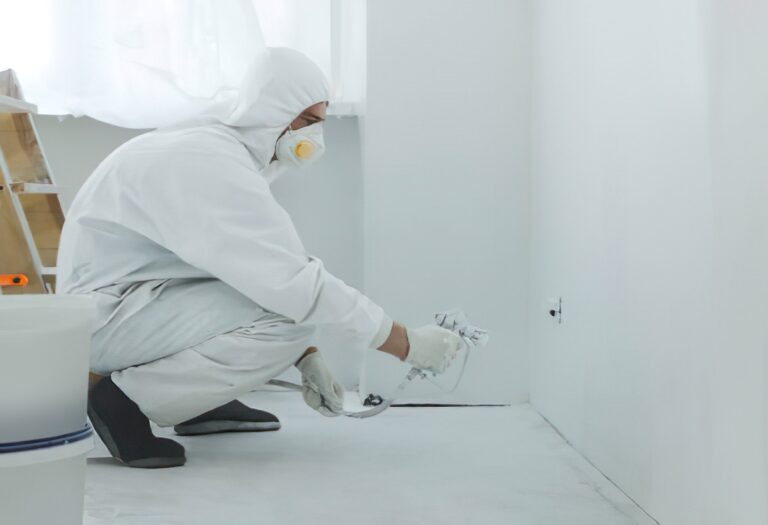
Why Preparation Matters
Mold spores are sneaky. Once disturbed, they can spread quickly through the air and attach to clothing, furniture, or HVAC systems. Without careful planning, you could end up chasing mold from one room to another.
Here’s how to set the stage for a clean, controlled, and effective home mold removal experience.
1. Schedule a Professional Inspection
Before anything else, bring in a certified mold inspector. They’ll:
- Use moisture meters and infrared cameras to detect hidden mold
- Identify the extent of contamination
- Recommend a customized plan for safe mold remediation
Even if you’re tempted to handle things DIY, an expert opinion will help you avoid missteps that could worsen the issue.
2. Select the Right Mold Remediation Team
Not all mold specialists are created equal. When vetting companies, ask questions like:
- Are you certified in mold remediation?
- Do you follow EPA or IICRC guidelines?
- Can you provide references or case studies?
Choosing a qualified team ensures the mold removal steps are carried out safely and thoroughly.
3. Create a Containment Strategy
Containment is a must. The goal is to isolate the affected area and prevent spores from spreading. Professionals typically use:
- Plastic sheeting and negative air pressure
- HEPA air scrubbers and sealed barriers
- Designated entry/exit points for cleanup teams
This step plays a huge role in how to safely remediate mold without contaminating clean areas of the home.
4. Protect Occupants and Pets
If you’re staying in the home during remediation, safety comes first. Depending on the severity, it may be best to relocate temporarily—especially for:
- Children and elderly family members
- People with asthma or mold sensitivities
- Pets, who can be affected just like humans
Ask your contractor what precautions should be taken to minimize risk during the process.
5. Remove or Protect Valuables
Mold remediation can get messy. Before the work begins:
- Remove personal belongings from affected areas
- Cover furniture or electronics with plastic
- Store important documents in a dry, unaffected space
Being proactive here protects your property and streamlines the entire mold removal guide process.
Preparation isn’t just about logistics—it’s about setting yourself up for success. When done correctly, you’ll avoid costly mistakes and ensure the work done is not just thorough, but long-lasting.
Next, we’ll walk through the actual mold removal steps—what happens during the cleanup, and how professionals ensure your home is truly mold-free.
IV. The Mold Remediation Process Explained
Wondering what really happens once mold remediation begins? If you’ve never gone through it before, the process might feel a bit mysterious—or even overwhelming. But don’t worry, we’re pulling back the curtain. Understanding each step of the mold remediation process will help you feel confident, informed, and ready to take control of your home’s environment.
This isn’t just about cleaning up—it’s about restoring safety, protecting your family’s health, and setting the stage for a truly fresh start.
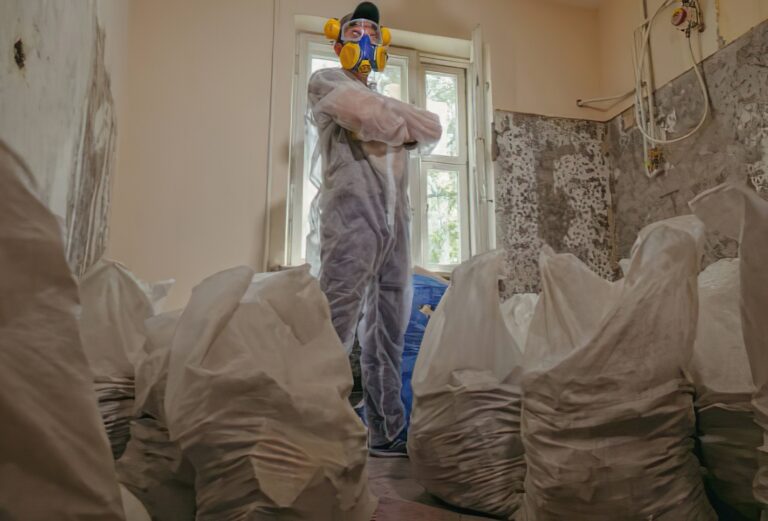
Step 1: Containment – Stop the Spread Before It Starts
Mold spores travel fast. That’s why the first critical step is containment. Professionals will seal off the affected area to prevent airborne spores from drifting into other rooms.
Expect methods like:
- Plastic sheeting to isolate the workspace
- Negative air pressure systems to keep air flowing inward
- Sealed doorways and vents
This step is crucial in maintaining safe mold practices throughout the project.
Step 2: Air Filtration – Clean the Air, Not Just the Surfaces
Next, industrial-grade HEPA filters are brought in to trap airborne mold spores and purify the air. This ensures that while materials are being removed or disturbed, the rest of your home stays protected.
HEPA filtration supports home health by dramatically improving indoor air quality during and after the remediation.
Step 3: Mold Removal – Out With the Infested
With containment and filtration in place, it’s time to remove the mold itself. Depending on the severity, this might include:
- Tearing out contaminated drywall or insulation
- Removing carpet, ceiling tiles, or wood trim
- Disposing of unsalvageable materials in sealed bags
Following proper mold removal steps ensures all affected materials are safely handled and permanently eliminated.
Step 4: Cleaning and Disinfecting – Don’t Leave Spores Behind
Even after removal, microscopic mold spores can linger. That’s why thorough cleaning is essential. Remediation teams use EPA-registered biocides and mold-killing solutions on:
- Walls, floors, and structural framing
- HVAC systems and air ducts (if needed)
- Any salvageable furniture or fixtures
This step reinforces safe mold remediation by ensuring the environment is not just cleared—but truly sanitized.
Step 5: Drying and Dehumidification – The Final Defense
The last line of defense? Moisture control. Mold only grows where it has water, so drying the area completely is a non-negotiable step.
You’ll often see:
- Commercial dehumidifiers in use for several days
- Ongoing moisture monitoring
- Repairs to leaks or ventilation improvements
This step helps prevent future growth and keeps your space mold-resistant moving forward.
By understanding each phase of the mold remediation process for home safety, you’re empowered to make smart choices—not just for today, but for the long-term health of your living environment.
Up next, we’ll explore what happens after the cleanup, including final checks, repairs, and simple ways to keep mold from returning.
V. Post-Remediation Verification and Prevention
So the mold is gone—now what? The visible signs may have disappeared, but ensuring your home stays mold-free requires a bit more than just cleaning up. If you’re aiming for lasting results and long-term peace of mind, it’s time to focus on post-remediation verification and smart prevention strategies.
This final stage is where many homeowners drop the ball. But with the right steps, you’ll not only confirm the job was done right—you’ll also reduce the chances of mold returning.
1. Schedule a Final Inspection and Clearance Testing
After remediation is complete, don’t just assume everything’s fine—verify it. Professional clearance testing checks for:
- Airborne mold spore levels
- Residual moisture in walls and floors
- Any hidden signs of contamination
Certified inspectors use advanced tools and lab testing to ensure your home meets safety standards. This step is key to confirming the safe mold removal was successful.
2. Repair and Rebuild With Mold Prevention in Mind
Once your home is cleared, it’s time to rebuild the areas that were removed or damaged. But don’t just put everything back the same way—this is your chance to prevent future issues.
Consider these mold-resistant upgrades:
- Mold-resistant drywall or insulation
- Waterproof flooring or sealants in moisture-prone rooms
- Proper slope and drainage around the foundation
By rebuilding smart, you create an environment that naturally supports home health.
3. Improve Ventilation and Moisture Control
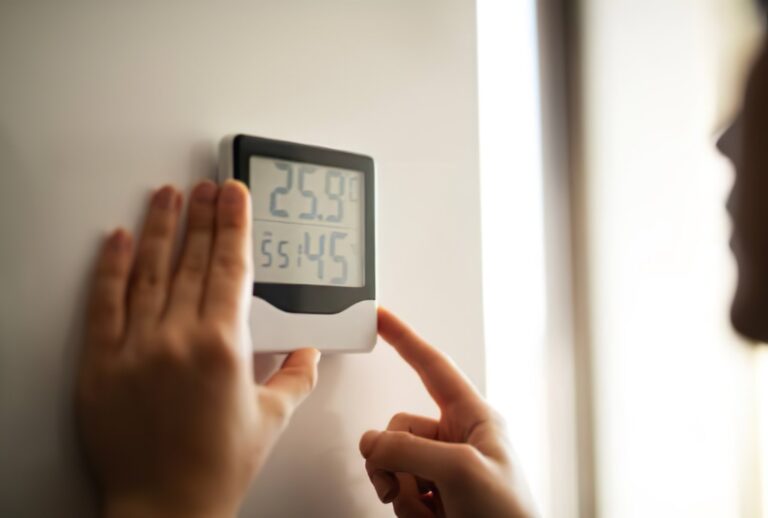
Moisture is mold’s best friend. To keep it away for good, make your home an unfriendly place for it to grow.
Simple ways to reduce indoor moisture include:
- Installing exhaust fans in bathrooms and kitchens
- Using dehumidifiers in basements or humid climates
- Checking regularly for plumbing leaks or condensation
These small changes go a long way in achieving a healthier home through mold removal and prevention.
4. Develop a Regular Monitoring Routine
Mold thrives when no one’s paying attention. Stay ahead of potential problems by building mold monitoring into your home maintenance routine:
- Inspect hidden areas (attics, crawlspaces, under sinks) every few months
- Monitor humidity levels—ideally between 30% and 50%
- Keep an eye (and nose) out for musty odors or water stains
A proactive mindset now can prevent a costly cleanup later.
5. Educate Everyone in the Home
Knowledge is power—especially when it’s shared. Make sure everyone in your household understands what mold looks like, smells like, and what to do if they spot early warning signs.
Empowering your family means you’re not the only one keeping an eye on the air quality.
By taking these final steps seriously, you’re not just reacting to a mold problem—you’re solving it at the root and building a healthier, safer home. And that’s the real win of any mold removal guide done right.
Next, we’ll wrap everything up and give you a clear path forward, so you can maintain your mold-free home with confidence.
Conclusion: A Healthier Home Starts with the Right Mold Remediation Approach
By now, you’ve taken a full tour through the essential steps of safe mold remediation—from spotting the first warning signs to ensuring your home stays mold-free long after the cleanup crew leaves. But let’s pause for a moment and ask: What does this really mean for you and your family?
It means peace of mind.

It means reclaiming your home’s air quality, structural integrity, and overall wellness. And most importantly, it means protecting the people you care about most.
Whether you’re just noticing the first signs of mold or you’re deep in the cleanup process, every choice you make impacts your long-term home health. Are you taking shortcuts—or are you investing in a cleaner, safer future?
If your goal is achieving a healthier home through mold removal, the key is to treat mold remediation not as a one-time fix, but as a holistic, informed process. One that’s based on science, guided by professionals, and supported by smart prevention strategies.
Let this guide be more than just information—make it your action plan. Keep asking questions. Stay proactive. And never settle for less when it comes to your home’s safety.
Because when mold is handled the right way, you’re not just removing a problem—you’re restoring your home to the healthy, thriving space it was meant to be.
If you’re in need of mold removal, services are available in these areas:

